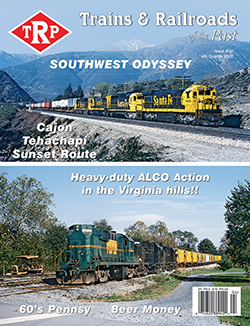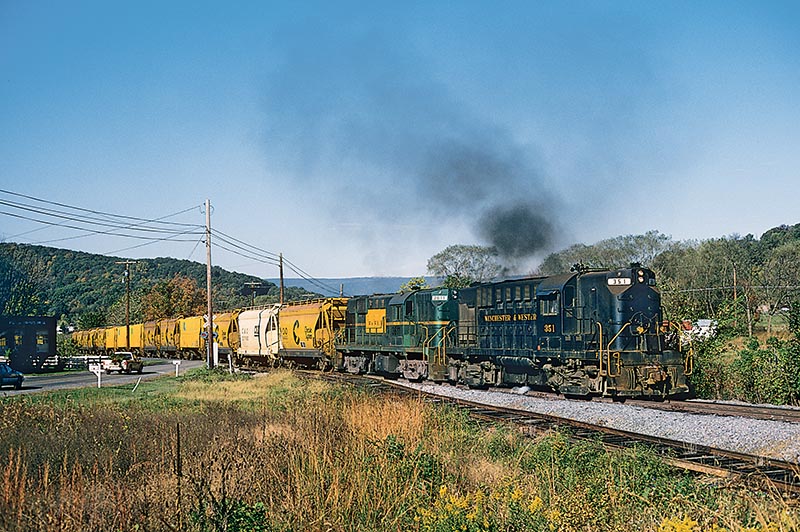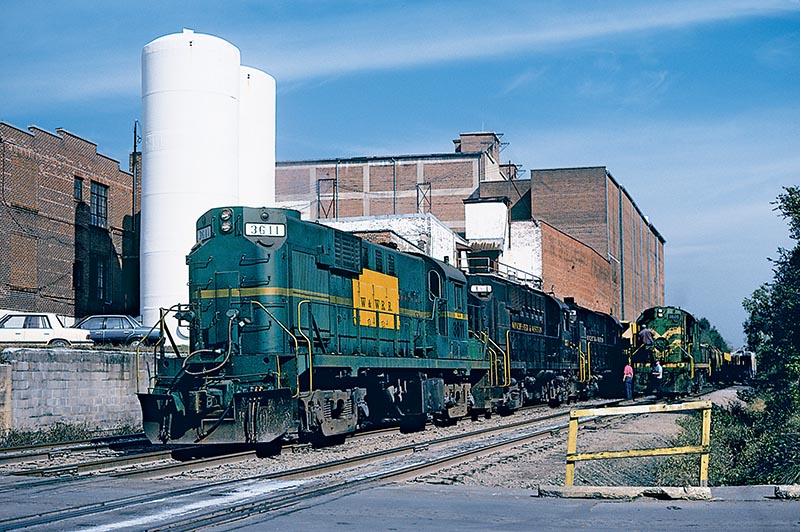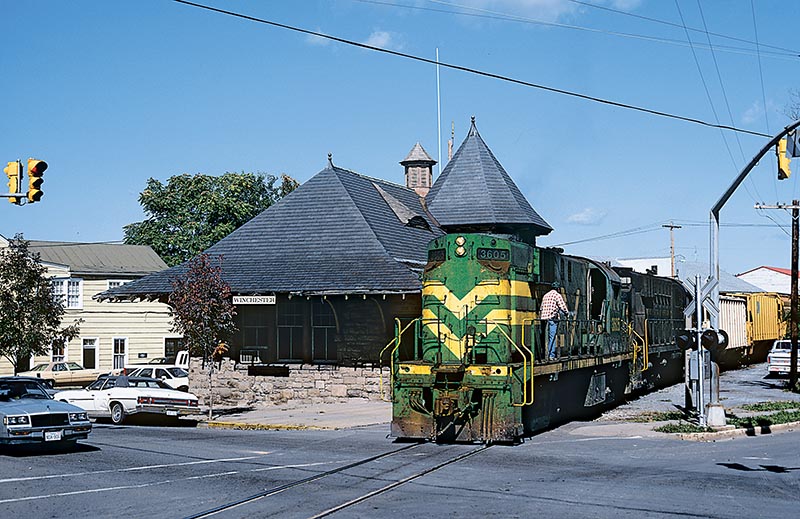 by David Baer/photos by the author
by David Baer/photos by the author
The Winchester & Western Railroad sits at the northern end of the Shenandoah Valley, which is a beautiful region in northern Virginia. Gore and Winchester are only about a dozen miles apart and are connected by U.S. Highway 50, which takes the most direct route between the two towns, but requires climbing several steep hills. The W&W, however, makes a huge “S” as it works it way east from Gore, taking a meandering 18 miles to connect Gore with Winchester. Leaving Gore, the line heads northeast to Gainesboro, where it loops around then heads southwest toward Hayfield. At Hayfield, the line turns east and climbs up a steep grade into Round Hill before arriving in Winchester, where the W&W interchanges traffic with CSX.
During the 1980s and 1990s, W&W employed a fleet of Alcos to lift the heavy sand loads up and over the Gainesboro and Round Hill grades, and it was a very enjoyable railroad to visit. Plus, the crews were friendly, becoming used to the railfans that flocked to the railroad to watch the spectacle.

ABOVE: The next trip down to the Winchester & Western was on October 16 and 17, 1990. By this date, the W&W had placed former Quaboag Transfer RS11 #3611 into service wearing metallic green paint and a large yellow box on the side of the long hood. On Tuesday, October 16, the 351 and 3611 were the power for The Sandman, seen passing the Round Hill fire department building, as they approach the top of the hill with fourteen loads. It is a beautiful clear day in the Shenandoah Valley in this view looking toward the mountains of West Virginia.
The Winchester & Western called the train from Gore to Winchester and return the “The Sandman.” The Sandman would start its day around dawn and make a round trip between Gore, location of the engine house and sand mine, and Winchester, where the loads would be dropped and empties tied on for the return trip. Depending on how the Alcos handled the hills, this would normally take between four to six hours. If one of the hills had to be doubled, it would take longer.
There were also times when the Winchester & Western split up the power on The Sandman, putting two units on the head end and a single unit shoving on the rear. In all of my visits to the W&W, all the power was placed on the head end of the train each time, and I never got the chance to see their helper operation. Also, while I never wit-nessed a train having to double a hill, I do have video showing an eastbound Sandman crawling about one m.p.h. up Gainesboro Hill…

ABOVE: At the small CSX/W&W interchange yard in Winchester, The Sandman has swapped units with the Inwood train, as both trains are seen sitting side-by-side on October 17, 1990. The 863 has been placed on the rear of The Sandman’s consist for the return trip back to Gore and the 3605 is now working the Inwood train. The crews are talking things over before departing. The East Wyck Street grade crossing in the foreground was open at this time, but it was later closed to automobile traffic. The CSX scale house is located just to the south of here, and when they were weighing cars, the grade crossing would be tied up for long periods of time.
 Read the rest of this article in the Fourth Quarter 2022 issue of Trains & Railroads of the Past. Subscribe Today!
Read the rest of this article in the Fourth Quarter 2022 issue of Trains & Railroads of the Past. Subscribe Today!


